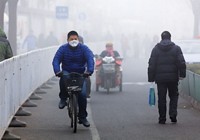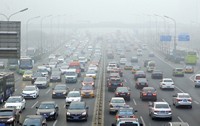Advertisement
Grab your lab coat. Let's get started
Welcome!
Welcome!
Create an account below to get 6 C&EN articles per month, receive newsletters and more - all free.
It seems this is your first time logging in online. Please enter the following information to continue.
As an ACS member you automatically get access to this site. All we need is few more details to create your reading experience.
Not you? Sign in with a different account.
Not you? Sign in with a different account.
ERROR 1
ERROR 1
ERROR 2
ERROR 2
ERROR 2
ERROR 2
ERROR 2
Password and Confirm password must match.
If you have an ACS member number, please enter it here so we can link this account to your membership. (optional)
ERROR 2
ACS values your privacy. By submitting your information, you are gaining access to C&EN and subscribing to our weekly newsletter. We use the information you provide to make your reading experience better, and we will never sell your data to third party members.
Atmospheric Chemistry
New Delhi’s haze has a surprising culprit
High chloride content in the city’s aerosols results in a foggy soup that shuts down transit in Delhi winters
by Lakshmi Supriya, special to C&EN
February 9, 2021

New Delhi has become notorious for its high levels of particulate air pollution, but there is another aspect to the hazy air that envelops the city. Winters are often shrouded in thick fog, casting a sepia gloom that routinely stalls trains and flights in and out of the city. New research suggests this dense fog occurs because the aerosols over the city are rich in chloride species, something not seen in other polluted cities in the world. (Nat. Geosci. 2021, DOI: 10.1038/s41561-020-00677-x). Reducing chloride emissions in the area could cut the wintertime visibility reductions in Delhi by almost half, the researchers say, easing the fog-driven delays in the region and reducing negative health and environmental effects of the polluted air.
Many studies have investigated the city’s particulate air pollution. Higher particle levels correlate with increased fog (Environ. Sci. Pollut. Res. 2017, DOI: 10.1007/s11356-016-7708-8). But other cities have similar levels of particulate matter without the extreme visibility problems that grind transportation to a halt in Delhi winters. Sachin S. Gunthe of the Indian Institute of Technology Madras and lead author of the study, became tired of flight delays on his trips to Delhi and wondered why they happen.
To figure this out, Gunthe, Pengfei Liu of the Georgia Institute of Technology, and colleagues set up an instrument to sample the air in New Delhi for a month in February 2018. The instrument captured aerosols and determined their chemical compositions.
What the instrument found surprised them. The team discovered chloride species made up a large proportion—up to 24%—of particulate matter smaller than a micrometer. In other polluted cities, like Beijing, sulfates and nitrates dominate the atmospheric chemistry.
The chloride likely comes from the burning of trash with a large amount of plastic and from electronic waste-recovery industries around the city that use chemicals like hydrochloric acid, which is released it into the air, Gunthe says. In Chennai, which has relatively cleaner air, the team found an increase in chloride only during the bhogi festival in January, when people usually burn old things to signify new beginnings, supporting this hypothesis.
Using thermodynamic modeling, the researchers found that gaseous hydrochloric acid in the air can condense onto particles or dissolve in the water layer that condenses around them in the atmosphere. In the presence of ammonia—common in the region from farming activity and livestock—hydrochloric acid can react to form ammonium chloride.
Ammonium chloride can absorb a lot of water, swelling the particles, particularly in the more than 90% relative humidity common in New Delhi winters. These particles are bigger than those that would form if the air were rich in ammonium sulfate or ammonium nitrate, which absorb less water than ammonium chloride. These large particles cause the dense fog and reduced visibility. The team’s calculations showed that the presence of hydrochloric acid in the air is responsible for about 50% of the visibility reduction in winter.
“It is striking that these air pollution emissions can make such a difference to haze and fog, which we more conventionally think of as weather,” says William Bloss of University of Birmingham who studies air pollution worldwide including Delhi and was not part of the study. This matters, he adds, as the haze shapes climate by scattering light and affecting cloud formation.





Join the conversation
Contact the reporter
Submit a Letter to the Editor for publication
Engage with us on Twitter